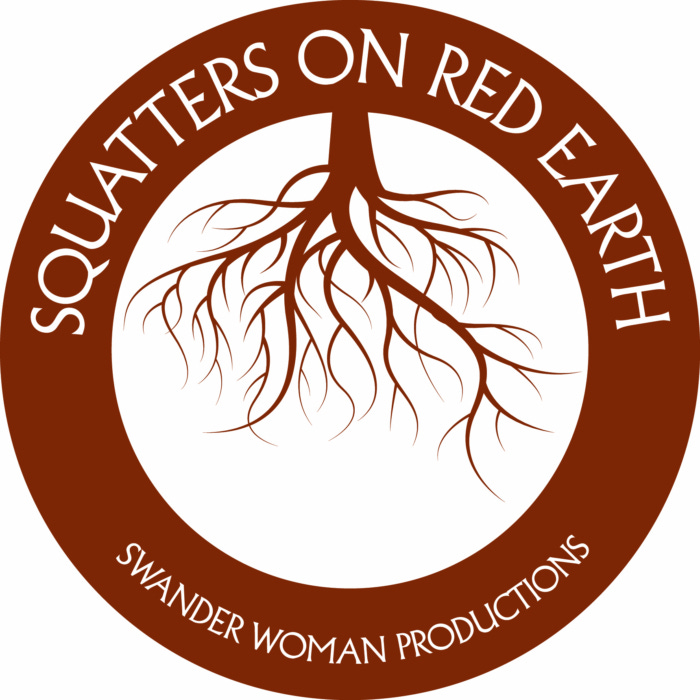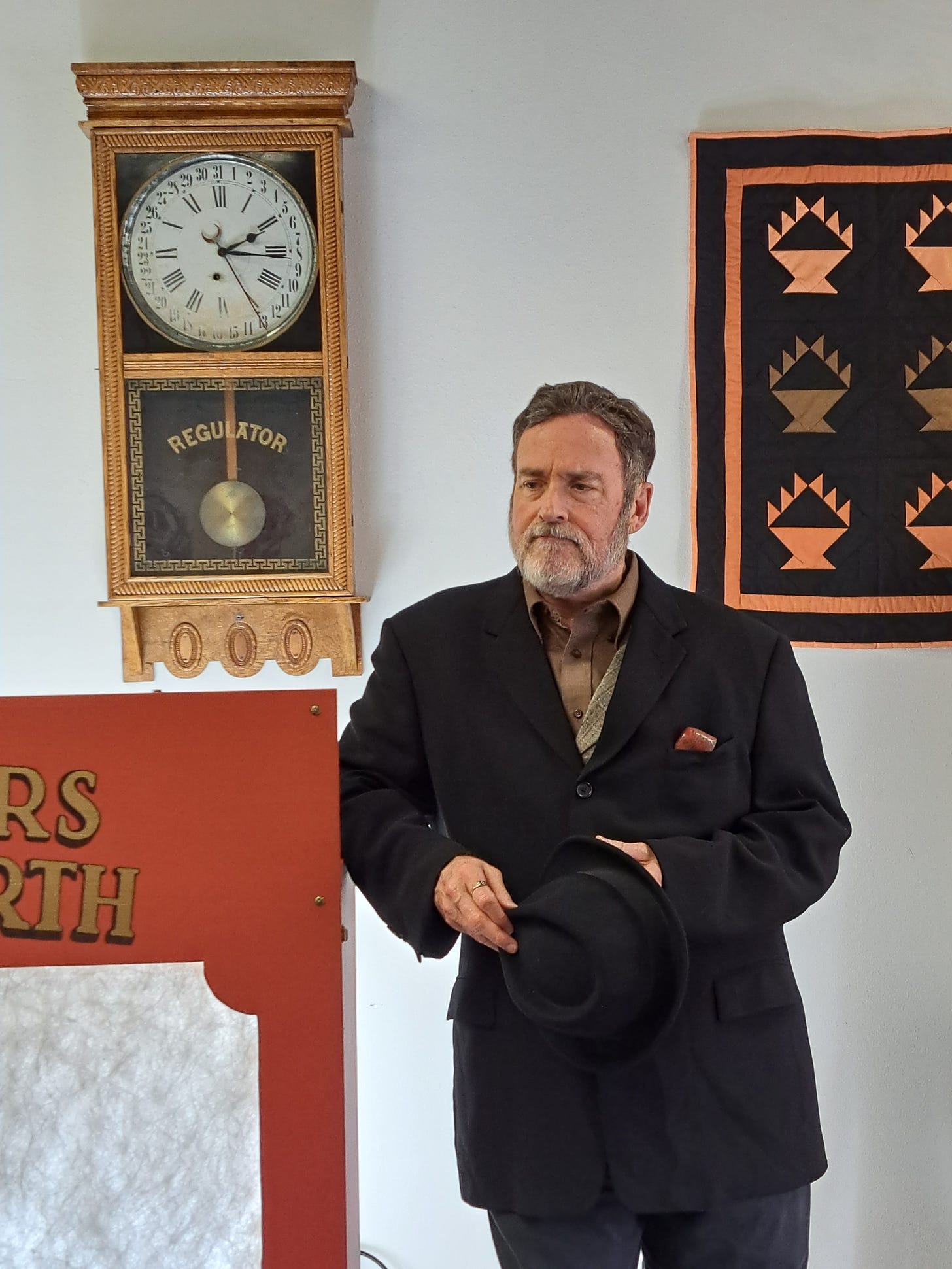In the early settlement days, my great-grandfather built a house, a duplex of sorts, on the prairie in Carroll County, Iowa. My family lived peacefully on one side and the Indigenous people lived on the other. The Natives had the good sense to leave Iowa in the winter for the South, but they returned each year to live temporarily in their wigwams, before moving back into the duplex.
“We always knew it was spring,” my grandmother told me, “when we looked outside and saw them putting up their wigwams in the pasture.”
War, rape, starvation, and genocide followed the white settlers across the plains. I knew the broad brushstrokes of that history, although I didn’t realize how calculated the land grab actually was, and how my mother’s family--white settler Famine Irish—played into the plot. We were colonialists fleeing British colonialists–plopped down in western Iowa on Native land. There, my great-grandparents raised a family of ten, losing several children, but living side-by-side for years with the Natives–most likely the Potawatomis.
I began to imagine there had to be other cooperative stories like this, clearly different from the standard film and textbook history I’d been fed as a child. We were still talking capitalism and colonialism, but with faces on the people involved. My mother’s family was pushed out of their homeland by genocide, a result of British imperialism. Then they came to the States and pushed another group off their land. Did this kind of displacement repeat itself throughout history? And what was the land on the plains like when my family arrived? The Natives were hunters and gatherers, but did they farm? If so, what were their techniques? And would this make good material for a new drama?
A few winters ago, in the middle of the pandemic, I plopped down in my chair in front of my woodstove and dove into a pile of books, from the history of the settlement of Turtle Island, to the ideologies of those who came for plunder or adventure, to those fleeing war or religious persecution. I read about the natural history of the Midwest, the great expanses of prairie, the wetlands and savannas.
The Europeans looked at the Midwestern landscape as nothing more than a bunch of weeds. But underneath the weeds, they discovered rich, black soil, soil that could grow an abundance of food. So, they drained the wetlands, plowed and planted without thought of losing this precious topsoil through erosion or mismanagement. They shot bison out of train windows for sport, fenced the land, and grazed cattle.
In contrast, I read about the Indigenous people and their ecological and sophisticated systems of agriculture, from the ways they harvested game, to the ways they created complex irrigation systems in the desert, to their floating gardens in the middle of lakes in Mexico. Bison were a key component of prairie ecology, providing food, clothing, and shelter for the natives. The bison grazed the grassland, preventing trees from taking over the prairie. The bison hooves pushed the prairie seed into the soil, allowing grasses and wildflowers to thrive.
Today, we’re “discovering” techniques like no-till farming, companion planting, and prairie strips that Natives were implementing thousands of years ago. We’re taking courses in permaculture and going to seminars in rewilding the landscape.
I saw paradigms at work. Each group who settled on Turtle Island thought that they had a right to the territory. Some, like the Puritans, paused when they saw that the land was already inhabited, but they were too enmeshed in their own loyalties and belief systems to take another course of action.
Night after night, I read about the complete mismatch between the white settlers’ perception of the landscape and its people, and the Indigenous view. For example, in the Indigenous system, the women farmed and were leaders in their tribal societies. The white settler patriarchal system held the opposite belief, and men from European cultures were appalled that women would have any power.
Nor could the whites understand the Native methods of farming, the men fanning out over hunting grounds. The whites wanted Native men farming in a small, stationary location. The whites would take over and manage the rest of the ground. And the whites wanted Natives to plow the land. They thought they could be more productive and better farmers if they would only turn the soil. “Root or die,” the whites told the Natives.
Finally, I knew I couldn’t begin to write the play without the help and guidance of Native Americans. My friend Shelley Buffalo arranged a meeting with a group of Meskawkis at the Settlement who provided me with historical background, and their perspective on the issue.
We all agreed we didn’t want to see genocide on the stage.
“How about dramatizing our relationship with the Amana Colonies,” Shelley offered, filling me in on the story. The Amana Inspirationists, a persecuted German Utopian community, had settled on what had once been Meskwaki land. The Federal government had driven the Meskwakis off to a reservation in Kansas. They’d longed to return to Iowa, but knew nothing of money or land transactions. The Inspirationists bought back the Meskwakis’ own land, then held the deed until the Natives could pay them back by selling furs and other goods.
Interviews, oral histories, and more extensive library research uncovered the drama and friendship between these two communal groups, each bound together by a deep spirituality and a respect for the land, each at odds with the surrounding mainstream culture. Then I began getting words on paper. After another nine months of drafting and redrafting, I had a work that I thought might shed a different light on the history of settlement in this country, the interactions of its people, and the changing ecology of the land.
Through grant support from Anon Was a Woman (in cooperation with the New York Foundation for the Arts) and the State of Iowa Historical Society, Inc, I am now announcing the opening performances of Squatters on Red Earth:
June 9, 8:00 P.M., Amana Performing Arts Center, Amana, IA. (39 38th Ave., Amana, IA.)
June 10, 2:00 and 7:00 P.M. Wieting Theatre, Toledo, IA. (134 S. Church, Toledo, IA.)
These performances are free and open to the public (free-will donations accepted.) Tickets–first come, first serve–at the door. Or, to reserve free tickets, put “Tickets” in the subject line and email agartsoffice@gmail.com.
The play runs for one hour with a talk-back discussion following the performance. Rip Russell, Laura Hudson Kittrell, and the Youth Theatre Troupe from the Meskawki Settlement star in the show. Shelley Buffalo designed the set and Michele Payne Hinz designed the costumes. Monica Leo designed the puppets. Brant Bollman directed. A great cast and crew!
For more information about the play or queries about the upcoming tour, please contact:
Janine Calsbeek
I hope to see you at the show!
Just a few spots left in the Okoboji Writers Retreat. This is a blast! Come all you writers, kick back by the waters, and learn a few techniques while you have fun:
https://okobojiwritersretreat.com/
Please read and support my colleagues from the Iowa Writers Collaborative:
Laura Belin: Iowa Politics with Laura Belin, Windsor Heights
Doug Burns: The Iowa Mercury, Carroll
Dave Busiek: Dave Busiek on Media, Des Moines
Art Cullen: Art Cullen’s Notebook, Storm Lake
Suzanna de Baca Dispatches from the Heartland, Huxley
Debra Engle: A Whole New World, Madison County
Julie Gammack: Julie Gammack’s Iowa Potluck, Des Moines and Okoboji
Joe Geha: Fern and Joe, Ames
Jody Gifford: Benign Inspiration, West Des Moines
Nik Heftman, The Seven Times, Los Angeles and Iowa
Beth Hoffman: In the Dirt, Lovilla
Dana James: New Black Iowa, Des Moines
Pat Kinney: View from Cedar Valley, Waterloo
Fern Kupfer: Fern and Joe, Ames
Robert Leonard: Deep Midwest: Politics and Culture, Bussey
Tar Macias: Hola Iowa, Iowa
Kurt Meyer, Showing Up, St. Ansgar
Wini Moranville, Wini’s Food Stories, Des Moines
Kyle Munson, Kyle Munson’s Main Street, Des Moines
Jane Nguyen, The Asian Iowan, West Des Moines
John Naughton: My Life, in Color, Des Moines
Chuck Offenburger: Iowa Boy Chuck Offenburger, Jefferson and Des Moines
Barry Piatt: Piatt on Politics: Behind the Curtains, Washington, D.C.
Macey Spensley, The Midwest Creative, Davenport and Des Moines
Larry Stone, Listening to the Land, Elkader
Mary Swander: Mary Swander’s Buggy Land, Kalona
Mary Swander: Mary Swander’s Emerging Voices, Kalona
Cheryl Tevis: Unfinished Business, Boone County
Ed Tibbetts: Along the Mississippi, Davenport
Teresa Zilk: Talking Good, Des Moines
The Iowa Writers Collaborative is also proud to ally with Iowa Capital Dispatch.








Congratulations, Mary! This is great news. If the play is ever filmed, I would gladly pay for a ticket to see it, and I would also spread the word. Have a wonderful opening!
Would enjoy seeing this, but unfortunately will not be able to.